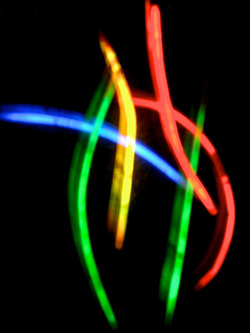
This is of course just my opinion, and others may disagree/add more. (Feel free to add in the comments.)
- The stuff that makes for a good contra dance also informs a good alt contra experience -- by which I mean a venue with a nice floor, actually having some room to move (although not too much...to me it's better for an alt contra when the dancers fill the space but don't pack it), and the welcoming community feel (e.g., everyone isn't booked for the entire night before you've got hands four for the first dance).
- Talent who has some familiarity with contra dancing, either from being a dancer first or having a detailed conversation with the organizer ahead of time.
- A caller who has communicated in advance with the talent, whether it's a DJ spinning tracks (especially if they're going to be mixing on the fly) or whether it's a band that's incorporating nontraditional contra music. It's particularly helpful in my opinion if the caller has done something like an alt contra before, but if they haven't they should have at least gotten some idea of the music ahead of time, and prepared themselves to be ready to call for a bit longer than they would in a tightly-phrased acoustic-music contra. If the phrasing is loose, it might be better to cut the super-complicated choreography, to my mind, unless you're explicitly trying to challenge the dancers (see the next point). The caller also needs to be alert to the dancers getting out of sync with each other and the music, since that's easier to have happen when the music is more loosely phrased.
- A clear idea by the organizers of what they want. Do they want the alternative contra to be an outreach event to new dancers, or a treat for the experienced ones? (Either way, see the caller point, above; good callers can tailor their set list to their audience.) This will also work into how it is marketed (to the public or only to the existing contra dance community).
- Decent lighting can really set the mood and if I was setting one of these up I'd make sure it was on my to-do list. The best lighting I have seen at a techno contra was what Vince Budnick did near Philly in a church's community center's gym last October. He managed to have Christmas lights around the edge in addition to moving (though not strobe) lights and I recall a few black lights and he made the room brighter between dances. If it's too dark, the caller can't see the dancers and can't save train wrecks if they happen. Black lights are neat and make the dancers who wear white glow, but this needs to be balanced out with the dancers' need to see and be seen to complete the steps safely. Dancing in the mood lighting is fun; limping off to stage left is not.
- Additionally, I like it when there are glowsticks or similar available to make dancers more visible (and anyone who knows me knows that I appreciate glowy, shiny, and/or sparkly things). For those with a store location nearby, Michael's craft store has them really, really cheap (a tube of 15 for $1 plus tax). I'm sure there are other places out there. LED wire can also be fun, although I'll admit to being less than thrilled when it's set to super-fast-blink and is up near my eye level.
- Interesting or unusual music choices -- as caller Seth Tepfer mentioned in the interview I did with him, alternative music contras open up a floodgate of new sources for music, and you're not limited by what instruments you have on hand. Eileen Thorsos spins "electrotrad" music you wouldn't necessarily hear on the radio or a traditional contra stage. When I went to go hear Phase X play, they had the orchestral Pirates of the Carribbean theme as part of their set, and Eiffel 65's "Blue" a few dances later. I was thrilled.
